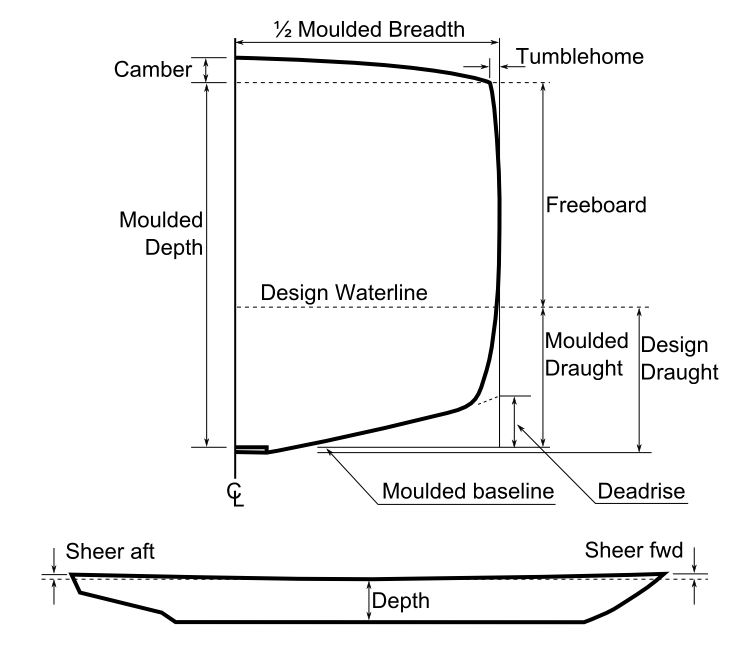Sheer (ship) on:
[Wikipedia]
[Google]
[Amazon]

 The sheer is a measure of longitudinal main deck curvature, in
The sheer is a measure of longitudinal main deck curvature, in

naval architecture
Naval architecture, or naval engineering, is an engineering discipline incorporating elements of mechanical, electrical, electronic, software and safety engineering as applied to the engineering design process, shipbuilding, maintenance, and ...
. The sheer forward is usually twice that of sheer aft. Increases in the rise of the sheer forward and aft build volume into the hull, and in turn increase its buoyancy forward and aft, thereby keeping the ends from diving into an oncoming wave and slowing the ship. In the early days of sail, one discussed a hull's sheer in terms of how much "hang" it had. William Sutherland's ''The Ship-builders Assistant'' (1711) covers this information in more detail.
The practice of building sheer into a ship dates back to the era of small sailing ship
A sailing ship is a sea-going vessel that uses sails mounted on masts to harness the power of wind and propel the vessel. There is a variety of sail plans that propel sailing ships, employing square-rigged or fore-and-aft sails. Some ships ...
s. These vessels were built with the decks curving upwards at the bow and stern in order to increase stability by preventing the ship from pitching up and down.
Sheer on exposed decks also makes a ship more seaworthy by raising the deck at fore and aft ends further from the water and by reducing the volume of water coming on deck.
See also
*Camber (ship)
The camber is a measure of lateral main deck curvature in naval architecture. The curve is applied to a deck transversely, measured as the height of deck at centreline above the height of deck at side.
The practice of adding camber to a ship's de ...
References
Naval architecture {{navy-stub